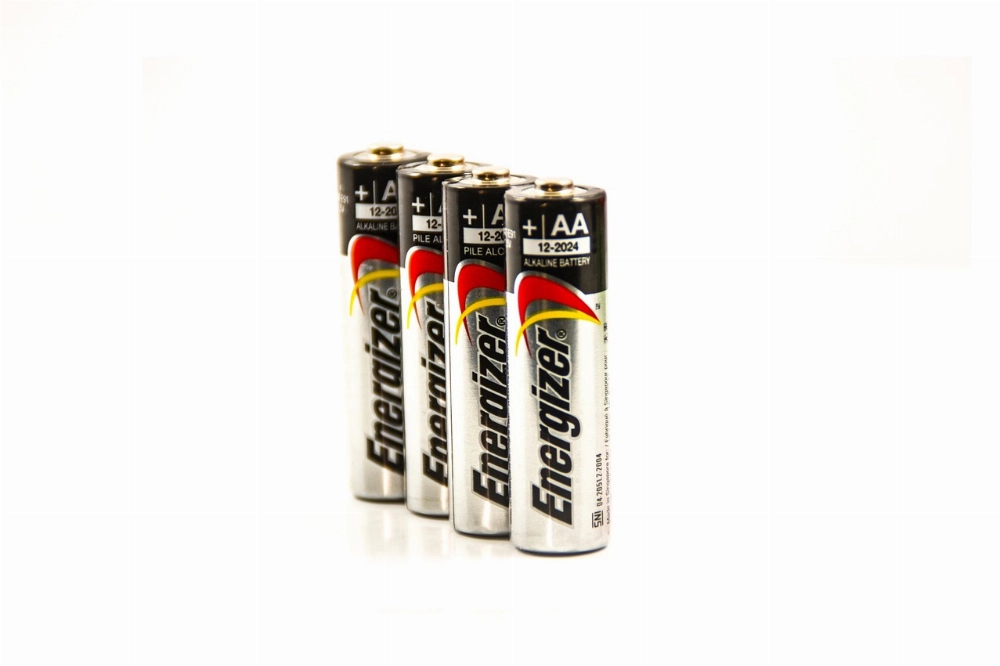Understanding DD Batteries: Everything You Need to Know
If you’re familiar with standard battery sizes like AA or D, you might be wondering what a DD battery is. These powerful, versatile energy sources are essential for certain devices, but they don’t get the recognition they deserve. From powering industrial tools to serving as backup power for emergency systems, understanding DD batteries can save you time and money in the long run.
DD Batteries vs. Other Battery Sizes: A Detailed Comparison
In this guide, we’ll dive deep into DD batteries, covering everything from their chemistry and voltage to useful maintenance tips. Let’s explore these heavy-duty power sources.
Part 1: What is a DD Battery?
Let’s start with the basics. A DD battery is a larger, cylindrical battery designed to provide more power and capacity than standard D batteries. While D batteries are common in household items like flashlights, DD batteries are typically used in more demanding applications.
DD batteries excel when you need a long-lasting and reliable power source. You’ll find them in industrial equipment, emergency lighting systems, and even medical devices. Available in both rechargeable and non-rechargeable forms, DD batteries offer flexibility to suit your needs.
Part 2: Chemistry and Construction
The key to DD battery performance lies in their internal chemistry. The chemical composition dictates everything from the battery’s energy capacity to its voltage and rechargeability. Let’s explore the different types of DD battery chemistries:
- Alkaline: These are the classic non-rechargeable batteries, known for their reliability and decent shelf life.
- Lithium: Lightweight yet powerful, lithium batteries offer high energy density and are often rechargeable. They are ideal for high-drain devices.
- Nickel Cadmium (NiCd): These rechargeable batteries have a long cycle life but are less environmentally friendly due to the cadmium content.
- Nickel Metal Hydride (NiMH): A more eco-friendly option compared to NiCd, offering higher capacity and less memory effect.
- Lead-Acid: While bulky, lead-acid batteries provide massive power, making them ideal for industrial applications.
Structurally, DD batteries resemble oversized D batteries but are designed to handle higher energy demands. Internally, the anode and cathode materials interact with an electrolyte to generate an electric current.
Part 3: Typical Voltage
Voltage plays a crucial role in selecting the right DD battery for your device. The nominal voltage is typically determined by the battery’s chemistry:
- Alkaline: 1.5V
- NiCd and NiMH: 1.2V
- Lithium: 3.6V
Always check your device’s voltage requirements before purchasing a DD battery. Using the wrong voltage can damage your equipment or significantly shorten the battery’s lifespan.
Part 4: Typical Capacity
DD batteries have a high capacity, which is measured in milliampere-hours (mAh) or ampere-hours (Ah). The capacity determines how long the battery can power your device. Here are the typical capacities for various DD batteries:
- Alkaline DD Batteries: Typically offer between 12,000 to 18,000 mAh, making them well-suited for medium to high-drain devices.
- Rechargeable NiMH DD Batteries: Generally provide 10,000 to 15,000 mAh, striking a good balance between lifespan and rechargeability.
- Lithium DD Batteries: These can go up to 20,000 mAh, making them ideal for devices requiring sustained high-power output.
Part 5: Typical Size
DD batteries are larger than standard D batteries, which allows them to store more energy. Their typical dimensions are:
- Height: Approximately 90–100 mm
- Diameter: Approximately 60–70 mm
Their larger size allows DD batteries to have superior capacity and durability.
Part 6: Rechargeable vs. Non-Rechargeable DD Batteries
So, should you opt for rechargeable or non-rechargeable DD batteries? The choice depends on your specific use case. Both types have their advantages, and understanding the pros and cons of each will help you make an informed decision.
We recommend considering your battery usage frequency and the types of devices you’re powering before making a decision. For more advice on choosing lithium RV batteries, refer to our guide on finding the perfect lithium RV battery.
DD batteries, a less common but essential power source, are used in various high-power applications.
Rechargeable DD Batteries
Advantages:
- Cost-effective in the long run.
- Environmentally friendly, helps reduce waste.
- Ideal for frequently used devices.
Disadvantages:
- Requires initial investment in a charger.
- Battery performance may degrade after multiple charging cycles.
Non-Rechargeable DD Batteries
Advantages:
- Convenient to use.
- Long shelf life, great for emergencies.
- Ideal for occasional use.
Disadvantages:
- Disposable, leading to higher costs and more waste in the long run.
Which DD Battery is Best?
There is no one-size-fits-all answer to this question. The best DD battery depends on your specific requirements:
- For Industrial Use: High-capacity lithium batteries are ideal. Lead-acid batteries are used in related industrial applications but are not a direct DD battery replacement.
- For Household or Emergency Use: Alkaline DD batteries are reliable, economical, and convenient.
- For Frequent Use: NiMH rechargeable batteries strike a good balance between cost and performance.
Alternatives to DD Batteries
If you can’t find DD batteries, consider these alternatives:
- D Batteries: While less powerful than DD batteries, multiple D batteries *used together* with an adapter can serve as a substitute.
- Custom Battery Packs: Some devices allow the use of custom battery packs that meet DD battery specifications.
- Lithium-Ion Batteries: If your device is compatible, these can be a suitable alternative.
Always ensure that the replacement battery meets the voltage and capacity requirements of the device.
What are DD Batteries Used For?
DD batteries are widely used in various applications:
- Industrial Equipment: Powering tools, machinery, and backup systems.
- Emergency Lighting: Providing reliable power during power outages.
- Medical Devices: Ensuring uninterrupted operation of critical medical equipment.
- Portable Tools: Powering high-powered tools such as drills and chainsaws.
With their high capacity and durability, DD batteries are ideal for applications that require a stable and reliable power source.
How Long Do DD Batteries Last?
The lifespan of a DD battery varies depending on the type and how it is used.
- Alkaline DD Batteries: Can last 5-7 years if stored properly and can provide power for several hours of active use.
- Rechargeable NiMH Batteries: Can last for 500-1,000 charge cycles or 3-5 years with normal use.
- Lithium DD Batteries: Offer a shelf life of up to 10 years (in storage) and perform well in high-drain applications.
Proper care and maintenance can significantly extend the lifespan of rechargeable batteries.
Conclusion
While DD batteries might not be the most common type, they are essential for many high-power applications. Whether you need to power industrial tools, emergency lighting, or medical devices, DD batteries are crucial. Understanding their chemistry, voltage, and capacity can help you make an informed decision.
Rechargeable options are both environmentally friendly and cost-effective, while non-rechargeable batteries are ideal for occasional or emergency use. With proper care, DD batteries can provide years of reliable performance. Therefore, the next time you are shopping for batteries, you will be better informed about your options!
The Ultimate Guide to Lithium-Ion Jump Starters
Lithium-ion jump starters are essential tools for automotive emergencies. This comprehensive guide will explore how to use them safely, maintain them properly, and understand why they are a smart investment for those who travel frequently.
What is a Portable Jump Starter?
A portable charger is an essential tool for ensuring your devices stay powered while on the go. In this guide, we will define what it is, outline the components used in its construction, and explain how it works in simple terms.
How to Choose the Best Jump Starter for Your Needs: Capacity, Performance, and More
Choosing the right battery pack is crucial for ensuring reliability and performance. This guide will help you understand the key factors to consider, including capacity, safety features, and performance, so you can make an informed decision based on your specific needs.








